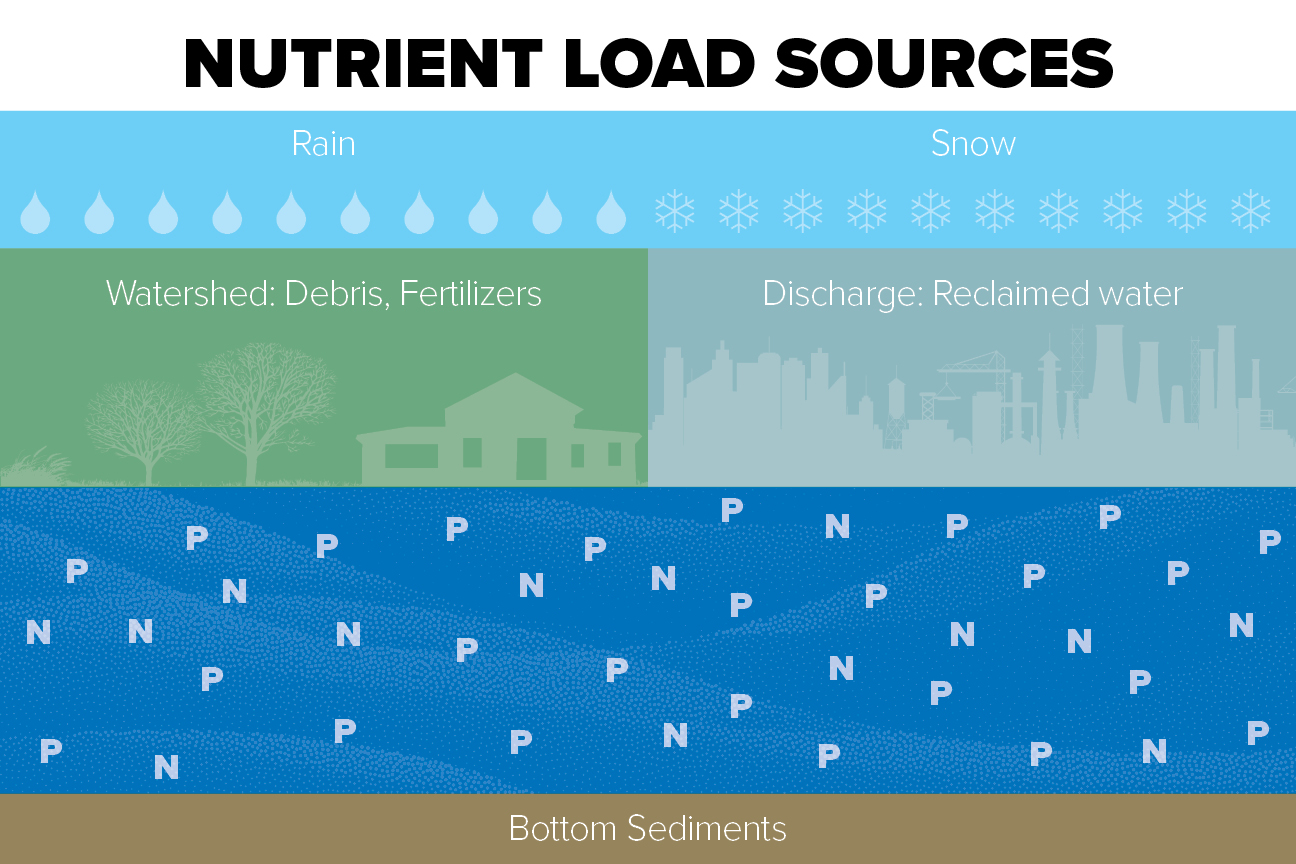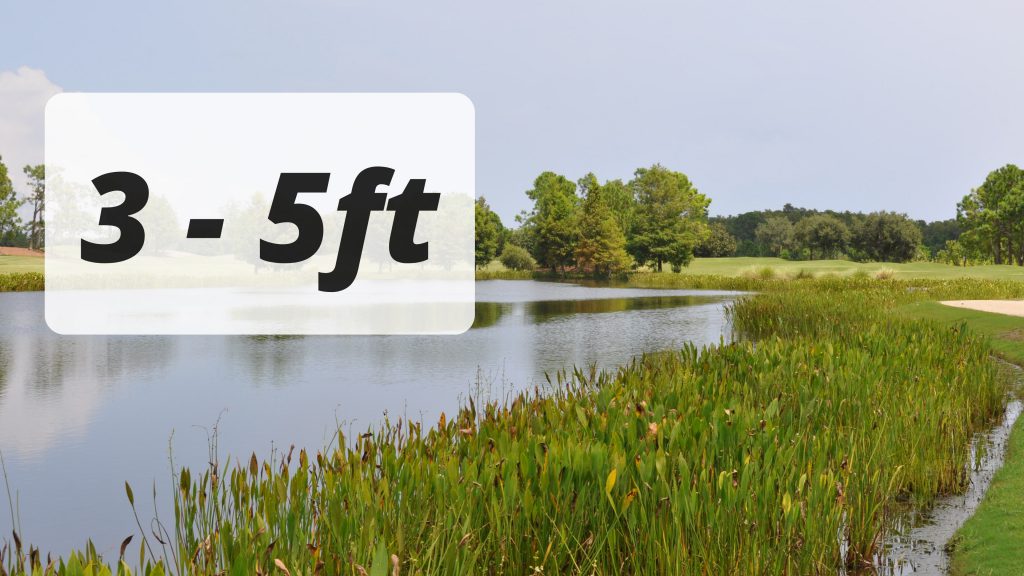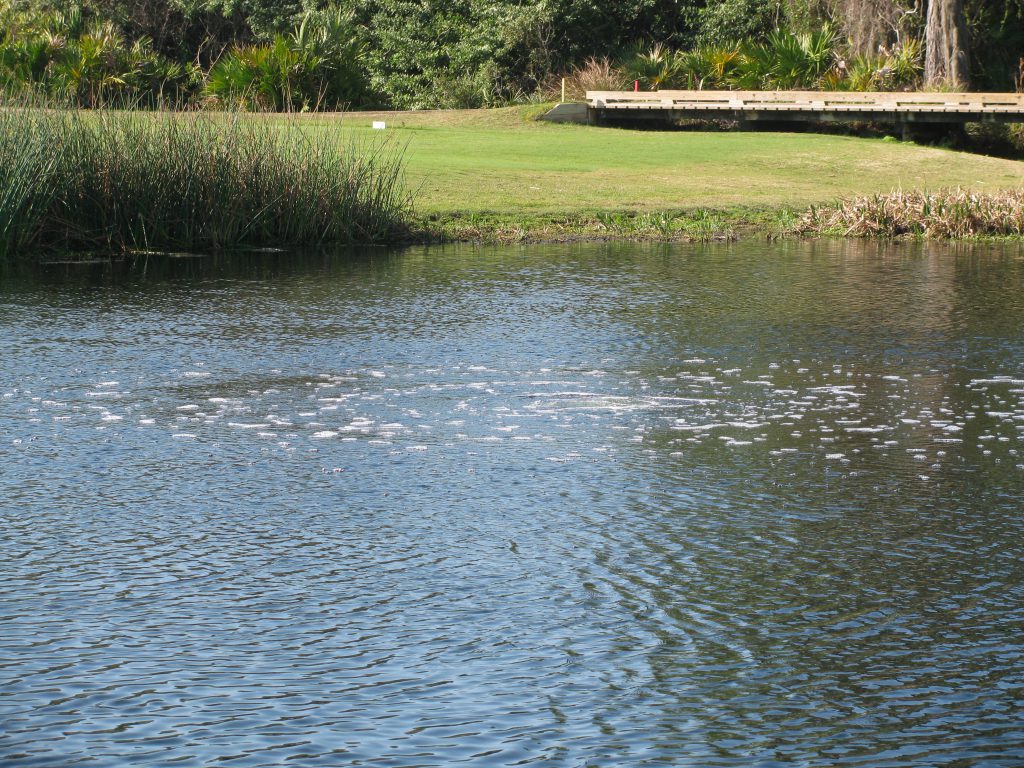
Restore Healthy Water Quality Conditions with Nutrient Remediation
Nutrients play an important role in lakes and ponds by serving as the foundation of the food chain, but in overly concentrated levels they can fuel the development of undesirable weeds and algae, bad odors, and toxic cyanobacteria. Nutrient remediation is the most reliable means of managing poor water quality conditions while encouraging the development of beneficial microbes and flourishing zooplankton.

Nutrients play an important role in lakes and ponds by serving as the foundation of the food chain, but in overly concentrated levels they can fuel the development of undesirable weeds and algae, bad odors, and toxic cyanobacteria. Nutrient remediation is the most reliable means of managing poor water quality conditions while encouraging the development of beneficial microbes and flourishing zooplankton.
Nutrients enter the water column in many ways, including watershed inflow and stormwater runoff that contains trash, motor oil, animal waste, grass clippings, and other organic pollutants. Nutrients can also occur from within the water itself through decomposing vegetation and accumulated muck and sediment. To achieve long-term nutrient reduction, it’s important to target both the external and internal sources of pollution.

Beneficial Vegetative Buffers
Shoreline buffers and low-impact design are two key practices that can be implemented to mitigate external nutrients from entering developed waterbodies. Beneficial buffers are crucial to help impede the natural flow of runoff and allow for native emergent and wetland vegetation to process and utilize the nutrients before they enter the aquatic ecosystem. The deep-rooted nature of vegetative buffer species also stabilizes the shoreline to prevent erosion and shoreline collapse. Effective buffers extend 3-5 ft out from the shoreline and should be maintained at a minimum of 18 in tall.

Nutrient Remediation Strategies
Preventing nutrients from entering a waterbody is a noble goal, but if years of external impact have occurred, additional actions should be considered to help mitigate internal nutrient loading. Depending on the characteristics of your ecosystem, an aquatic specialist may choose one of three common solutions.
- Phoslock (lanthanum-modified clay) – Derived from a natural mineral that quickly binds with the nutrient phosphorus and permanently removes it from the water column by sinking to the bottom of the lake or pond. Phoslock also effectively limits nutrients found in muck and sediments.
- Aluminum Sulfate (Alum) – Works similarly to Phoslock, but serves as an effective alternative for chronic nutrient loading in large lakes, such as reservoirs, or in highly turbid water. When introduced to the water, Alum creates a floc that binds with the excess nutrients and then settles to form a cover over the sediment that locks in excess nutrients, making them unusable for algae and weed growth.
- Oase– Offering two solutions that target excess nutrient levels, Oase’s SchlixX Plus and SeDox help manage elevated phosphorus and nitrogen levels. SchlixX Plus helps accelerate organic muck decomposition, balances nutrients within the sediment layer, stabilizes pH, and increases oxygen levels, creating a more balanced ecosystem. SeDox is another tool that can be utilized to target high nutrient levels in the water column.
- TryMarine – A game-changing innovation, TryMarine targets decaying organic material or “muck” trapped at the bottom to help restore water quality, improve sediment composition, enhance biodiversity, and turn back the clock – rejuvenating your lake. TryMarine differs from these nutrient remediation solutions as it does not bind with excess nutrients. Instead, it focuses on increasing oxygen levels in the bottom muck, helping to process the nutrient-rich material into usable nutrients that are then consumed by the lake’s natural food web. This, in turn, helps restore water quality and create a more balanced ecosystem.

Know Your Sustainable Options
Products specifically designed for nutrient remediation are important, but excess nutrients can also be targeted with other sustainable solutions. Fountains and aeration systems, for instance, help create oxygen-rich conditions that limit the impact of nutrients. Or, beneficial bacteria can be introduced through a process called biological augmentation. These desirable bacteria restore ecological balance by consuming nutrient-rich bottom sludge. Muck and sediment can also be physically removed from the waterbody using mechanical hydro-rakes and dredging equipment – with the added bonus of increased depth and volume.
Be Proactive With Your Waterbody
Nutrient pollution is one of the most common problems plaguing our freshwater resources, which is why preventative measures are key. Many lake and pond owners find success with an annual management program, which prioritizes monitoring and maintenance all year long. While most management plans are tailored for your unique goals and budget, all programs are driven by data compiled through water quality testing in a professional laboratory. Over time, this data is leveraged to track conditions and predict water quality problems before they manifest.
Our freshwater resources are dynamic systems that we rely on for many things, including recreation, irrigation, stormwater collection, and drinking water, to name a few. When it comes to addressing nutrient pollution and the problems associated with it, a multifaceted management approach is most impactful and often most cost-effective over time. Contact your lake management professional to discuss nutrient remediation for your waterbody.









